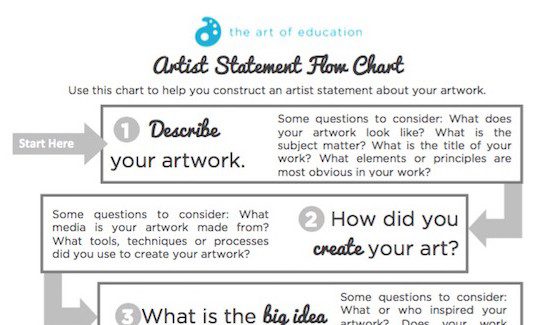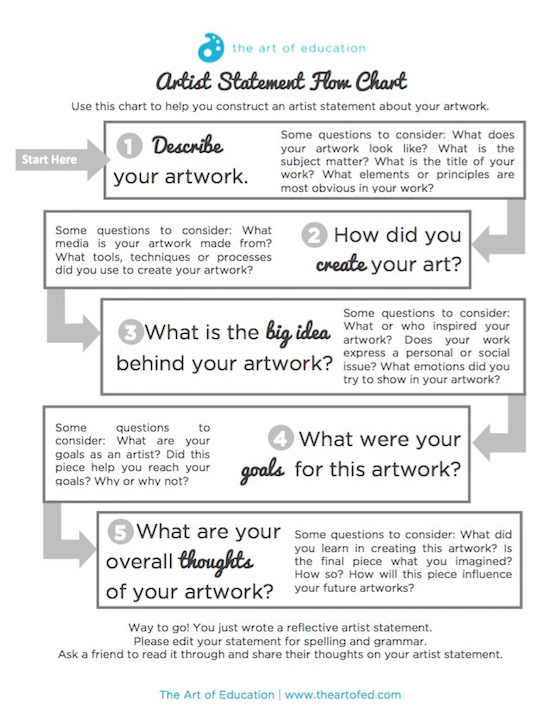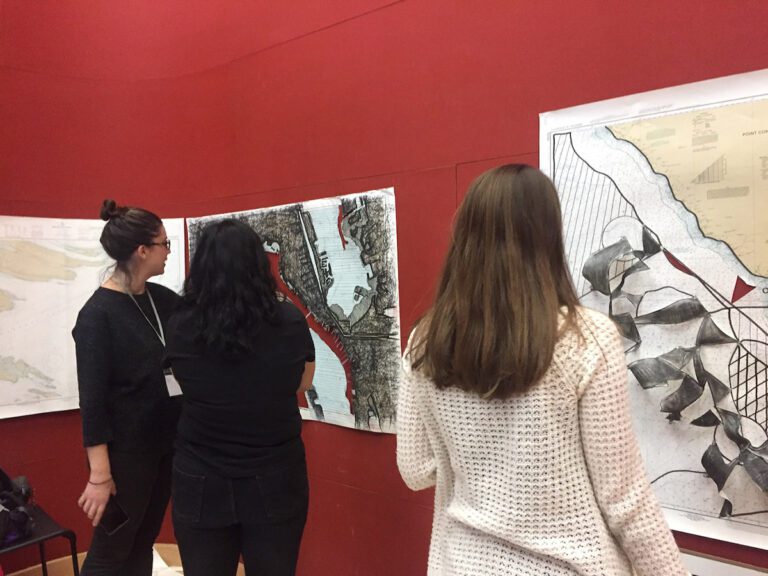Writing an artist statement can be a daunting task for middle school students. More often than not, students become stuck on what to write, feeling like they might say something “dumb.” Or, sometimes they just may have trouble articulating their thoughts. Many times, art teachers have a set of prompts for students to use to help direct the writing process. This can be an effective way to get students to reflect on specific objectives and goals, but it can also produce forced one or two-word reactions.
Is it actually possible to generate authentic artist statements from students by providing scaffolding that still allows for individualization?
Yes. Consider using a guide that will lead students along the path of writing a reflective and authentic artist statement. One of the easiest ways I have found to support middle school students in writing artist statements is to provide them with a flow chart like the one below.
Download NowA flowchart allows students to organize and pace their writing yet keeps plenty of room for personalized responses. The visual aspect of the chart also helps turn the writing activity into something more appealing. In return, it tends to spur more engagement.
Start your outline with the base of formal analysis (Describe, Analyze, Intent and Judge) but personalize the terms with questions that relate to your art room. Is your curriculum TAB-based? Provide supporting questions to your students that highlight how the choice centers or unit themes influenced their work. Maybe the elements and principles are a strong focus within your projects. Encourage students to describe the prominent elements and principles found in their work.
As students write, consider posting art vocabulary words for them to incorporate into their statements. If the process of writing an artist statement seems too overwhelming for your students, consider splitting the questions up. Asking students to answer separate questions on separate occasions might be the key to developing reflective artist statements. However you decide to encourage writing about art in your class, providing a visual guide can lead to authentic responses and successful reflection.
Having your students write artist statements is a great way to help them self-assess and learn to think critically about artistic decisions. That’s why we devote an entire week in the Assessment in Art Education course to reflecting on artwork. This week, along with the other amazing course content will leave you with a comprehensive toolkit that has many different types of authentic assessments ready for direct application in your classroom.
How do you teach students to write an artist statement?
What prompts or questions do you use to help your students?
Magazine articles and podcasts are opinions of professional education contributors and do not necessarily represent the position of the Art of Education University (AOEU) or its academic offerings. Contributors use terms in the way they are most often talked about in the scope of their educational experiences.






